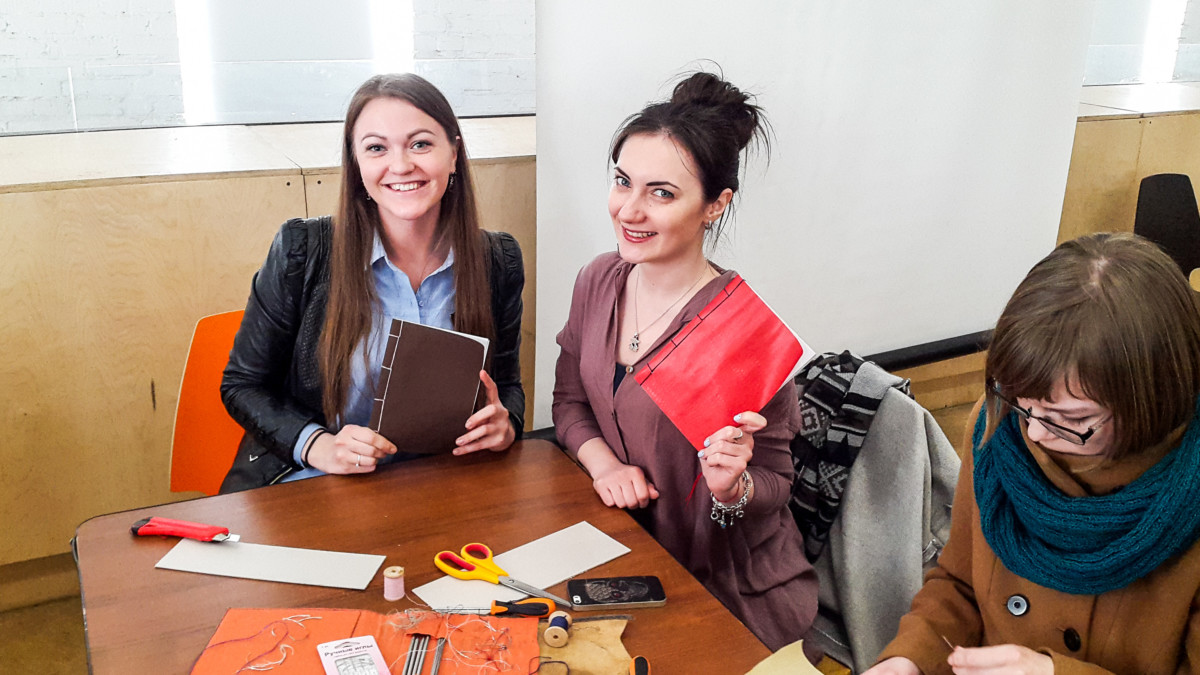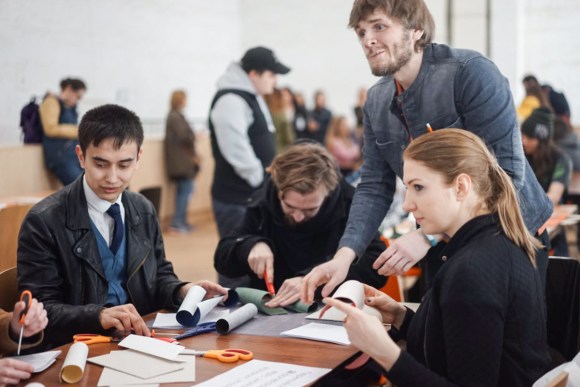Teaching Bookbinding in Just One Hour (or Even Less)
I am invited to different events quite regularly to entertain visitors (kids and adults) and teach them some simple bookbinding. This was exactly why yesterday I was at the Shalom Moscow festival.
As one can guess by the name of the event, it is dedicated to Jewish culture and takes place in Moscow. It is my second time at the Shalom Moscow and I still have some problems justifying how the things I teach fit Jewish cultural context.
The problem is, I have only an hour to show something. This means I have to bring some premade elements that can be easily assembled to final form. Preferably without any glue. That said, only simple book structures are OK.
Last year I had three workshops: Coptic binding, long-stitch binding and Japanese binding. The last one was a blast. I had more than 20 students (half of them kids) and we just had to snatch more and more and more tables from other workshops held in the same room. I even had to deny people from joining the class at some point.
This was a real trial to my ability to justify how Japanese binding could be Jewish =)
This year I had only two one-hour workshops. I’ve decided to make it easy [for myself] and prepared materials for Japanese binding and long-stitch binding classes.
Japanese binding:
Some results. Including a very simple model I’ve made to show my students what they should get in the end:
More photos by Alexandra Malikova:
Automation of the hole making =)
I really like to make faces…
If everything is prepared (paper is folded and collated, covers are cut, etc.), there is no problem in showing how to make any of these binding structures in just some 20 or 30 minutes. If you choose a simple sewing pattern. It is just like watching some YouTube tutorial. But in real life =)
It gets harder when you’ve already started teaching the first group, and new people come 15 minutes later. Because it is exactly like things happen during events like this one.
Anyway, in the end everyone was happy and went home with a simple handmade book.
Long stitch binding:
We’ve used some bookbinding cloth to act as a makeshift book covers. So, it was pretty flexible =)
However, I continue to wonder, how should I better link these short bookbinding sessions to Jewish culture. I always try to tell my students about book history. Scrolls and finding of Cairo Genizah. Modern bindings and medieval codices.
This time I even showed them a Talmud I’ve just sewn a few days ago. It is 15 cm thick — the thickest book I have ever worked with =)
Do you have any advice on the matter? Looks like that’s not the last time I’m invited to an event like this. What else should I do to add some ‘Jewishness’ to bookbinding? =)
Read More
Please Support us on Patreon!

Moreover, starting with the pledge level of $3, you will get a digitized vintage book about bookbinding, book history, or book arts each month from us!
These pledges help iBookBinding to continue its work and bring more information about bookbinding and book arts to you!



























